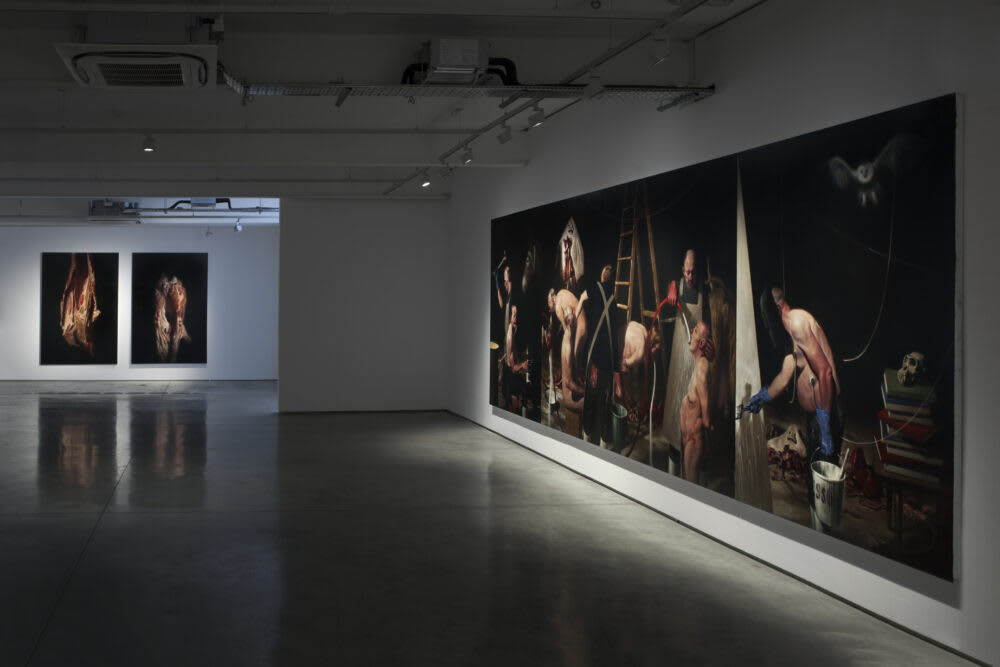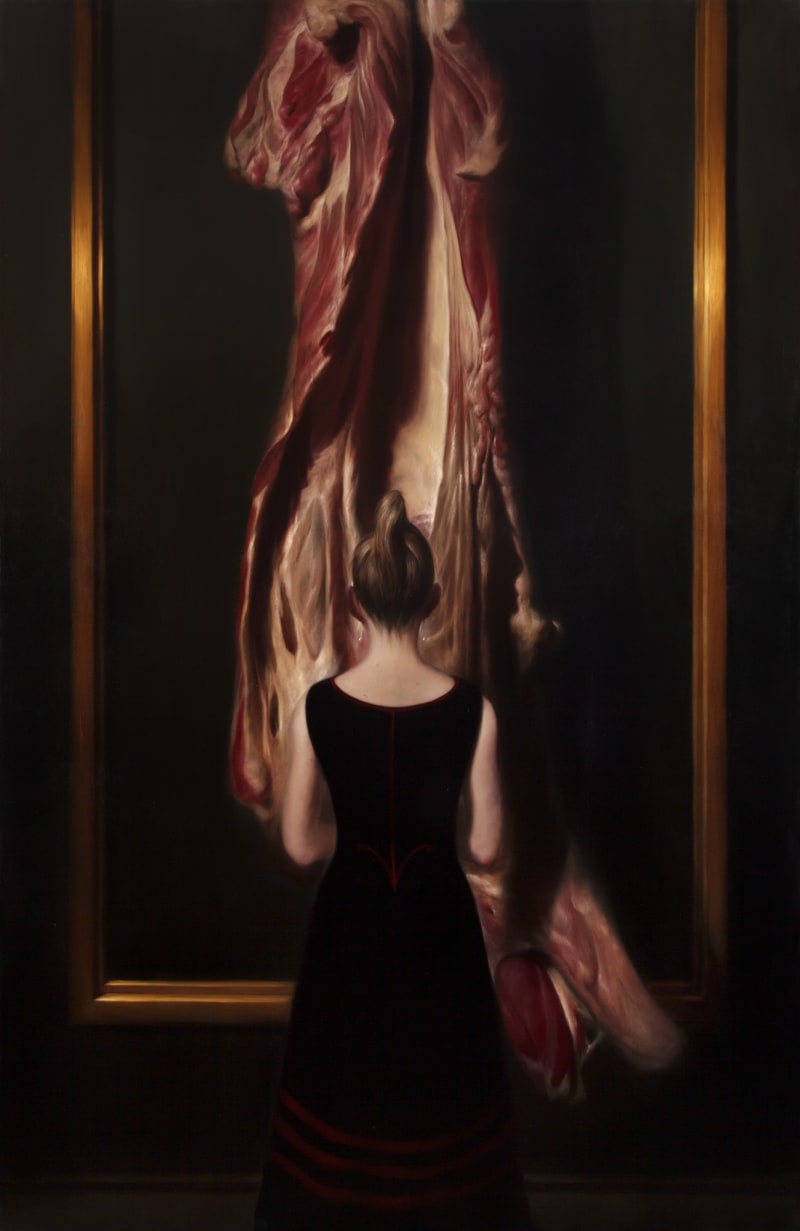Overview
Flowers Gallery is pleased to present an exhibition of new paintings by Glasgow-based artist Ken Currie. The exhibition is accompanied by a new catalogue with essay Martin Hammer, the author of several important scholarly books on the art of Francis Bacon and Professor of History and Philosophy of Art at the University of Kent.
Since the early 1990s, Ken Currie has become known for his closely observed and often unsettling portrayal of the body, depicting the damage inflicted by illness and decay as a response to what he felt was the sickness of contemporary society. These themes are expressed throughout in rich painterly terms, producing luminous images which, Martin Hammer has said, enable us to “acknowledge the realities of violence and vulnerability, but from a certain imaginative distance”. 1
The works in the present exhibition focus on the human body in a state of transformation, between physical and existential states. This theme is first introduced by a pair of paintings titled Marsyas and Acteon, which portray mysterious flesh-like forms. The title of the latter painting refers to a huntsman in Greek mythology who is turned into a stag by the Goddess Diana as punishment for surprising her while bathing naked in the woods, and in turn caught and consumed by his own hounds. In particular, it is Ted Hughes’ visceral translation of this gruesome transmutation within Ovid’s Metamorphosis which has inspired the rich colours and unflinching intensity of exposed gristle and flesh.
The hybridised figures of Tragic Forms I-V, from which the exhibition takes its title, appear to be half-human, half-insentient slabs of meat. Transitioning between the two, they present a state of physical and psychic flux. The passage between one form and another is often echoed in the transition between darkness and light in Currie’s work. The brightly lit figures appear to emerge from a darkened and featureless background, suggestive of a theatrical space. Donald Kuspit has compared the tension between darkness and light within Currie’s paintings with Freudian ideas of the conscious and unconscious mind, with the highly illuminated figures (representing consciousness) under constant threat of being subsumed by the surrounding gloom (the unconscious). He says: “Without the darkness, their presence is incomplete, especially because the darkness has more consummate, traumatic presence than they do.” 2
A series of self-portraits with masks expands Currie’s preoccupation with visual disfigurement, with particular reference to the images of facial reconstructions recorded by British artist and former surgeon Henry Tonks during WWI. According to Currie, these “tell us more about war than any other imagery”. In a reversal of Tonks’ drawings, the masks themselves project, rather than conceal, horrific distortions of flesh. In the triptych Metamorphosis, the face is dissected by what appear to be bandages, into multiple overlapping planes in a series of permutations, reflecting on what Currie has described as “The reality of what machines do to people”.
The painting Ensemble presents three wounded soldiers playing an unlikely trio of instruments, evoking the haunting whistling and crashing sounds of the trenches. The theme of sickness and mutilation is further explored in The Unwell, in which individual narratives played out by humans and animals are interwoven to form a complex allegory within the artist’s studio. The floor is strewn with a tangled mass of intestines, connecting the three panels of the painting, and echoing the wires from a heart monitor which extends from the artist’s body across the canvas. In the central panel of this triptych, several naked male figures are being force fed and expelling a white liquid, much like the artist’s primer or ‘gesso’ which is being applied to the canvas in the left hand panel. They are surrounded by beasts, while the artist himself is visited by the ghostly presence of an owl, alluding to the nightmare vision of Goya’s The Sleep of Reason Produces Monsters.
Animals have often featured as part of Currie’s visual language, in order to codify and reflect the essential characteristics of human nature. In recent paintings, Currie has returned several times to the image of the Skate, a creature also often painted by Soutine and Chardin, as well as fellow Scottish artist and friend, the late John Bellany. In the painting Tragic Form (Skate), two men stand either side of the giant hanging creature, surveying deep, dissecting wounds, which they appear to have inflicted. For Currie, the emotive ‘expression’ of its gills invokes pathos and calls for reflection on the universality of suffering.
1. Martin Hammer, 2016, Ken Currie – Tragic Forms, Ex. Cat. Flowers Gallery, London.
2. Donald Kuspit, 2008, Ken Currie – Animals, Ex. Cat. Flowers Gallery, London.





















